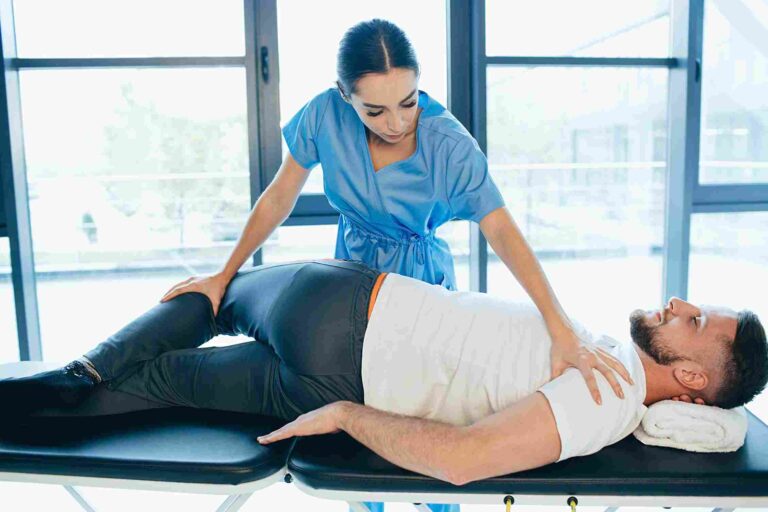Weightlifting is a terrific form of workout, but it strains your spine. Here’s how to prevent back injuries while gaining muscle mass and strength.
Daily movements like standing and walking place a great burden on the lower back’s muscles, ligaments, vertebrae, and intervertebral discs. This load is greatly increased when weightlifters are involved. Twisting, turning, and lifting motions put pressure on the spine and can be dangerous if done incorrectly.
A lot of people exercise weights to build muscle, increase fitness, and enhance their general health. Yet if you lift incorrectly, your back could get hurt badly.
It’s crucial to comprehend what causes back discomfort and how it can be avoided if you want to avoid these ailments. Here are three of the most typical back injuries brought on by weightlifting, along with helpful prevention advice.

HERNIATED DISCS
Causes
The intervertebral discs lessen the load put on the vertebrae by acting as “shock absorbers”. They have a crucial role in weightlifting exercises: stabilising the lower back. One or more of the intervertebral discs may tear or herniate as a result of poor posture, lifting weights that are too heavy, and/or overtraining. The spinal canal gets smaller as a result, and the spinal nerves risk getting pinched.
Symptoms
- Weakness
- Tingling
- Pain
- Numbness
Treatment
The most conservative forms of treatment are always explored first. The symptoms can usually be controlled with a combination of rest, activity restriction, medication, and physical therapy. A herniated disc, however, may occasionally need surgical repair.
LOWER BACK STRAIN
Causes
When muscles or ligaments are overstretched, lower back strains develop. These commonly take place when weightlifters:
- Lifting excessive weight
- Utilize poor judgement
- Possess a thin core
- Have asymmetry in your core muscles
Symptoms
Tiny, superficial tears typically result in minor symptoms that go away in a matter of days. Symptoms brought on by large, deep tears may call for a reduction in weightlifting activity. Pain and spasms are the two main signs of sprains.
Treatments
Strains are treated with conventional methods. Most of the time, strains will disappear after a brief period of rest and/or a change in activity. Ice and anti-inflammatory drugs are additional therapy alternatives that can hasten the healing process. Make an appointment with an orthopaedic spine specialist if symptoms don’t go away or worsen after receiving this kind of care.
SPONDYLOLYSIS
If performed too frequently, extensions may also result in spondylolysis in addition to sprains. On the other hand, excessive forward bending may result in herniated discs. Little cracks or stress fractures in the vertebrae can cause spondylolysis, a severe injury. Lower back pain is one of this condition’s typical symptoms.
Treatment
Before exercising, properly warm up to reduce the risk of spondylolysis. A physical therapist or orthopaedic surgeon can create a stretching programme for you to do before and after exercise if you’re unclear about the best way to warm up. Maintaining proper posture and using safe lifting methods are other measures to avoid spondylolysis.

GENERIC WEIGHTLIFTING SAFETY ADVICE
You can prevent significant back damage by stretching before exercise, cooling down after weightlifting, and giving up any bad posture-causing behaviours. The easiest method to maintain the health of your back is to just be aware of your own body.
Although it’s natural to feel your muscles “burn” during a workout and to feel exhausted afterwards, it’s not normal to have constant discomfort while lifting or an ache that won’t go away. It’s an indication that your body needs a break.
It may be necessary to see an orthopaedic specialist at Specialty Care Clinics if your weightlifting-related back discomfort is persistent. Call now or make an appointment at (469) 545-9983.
